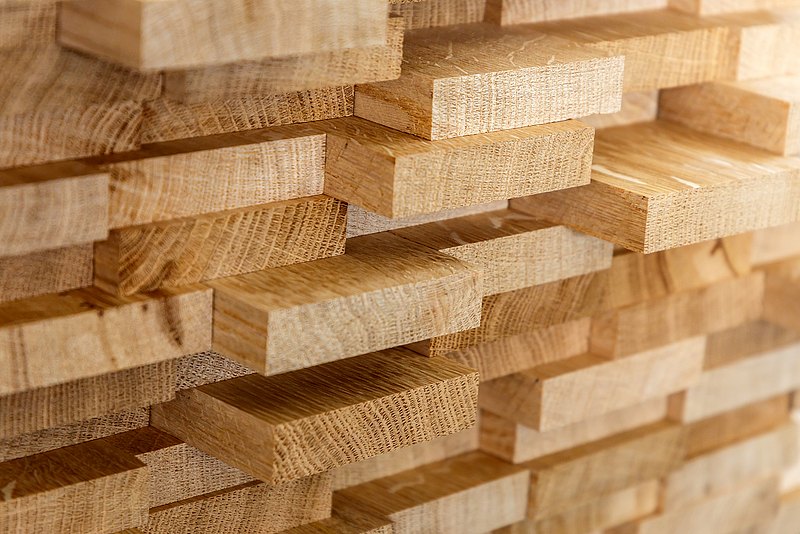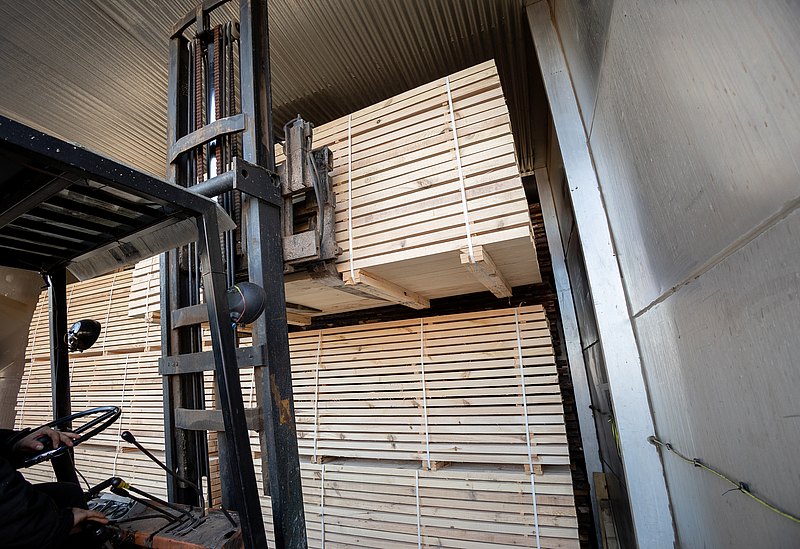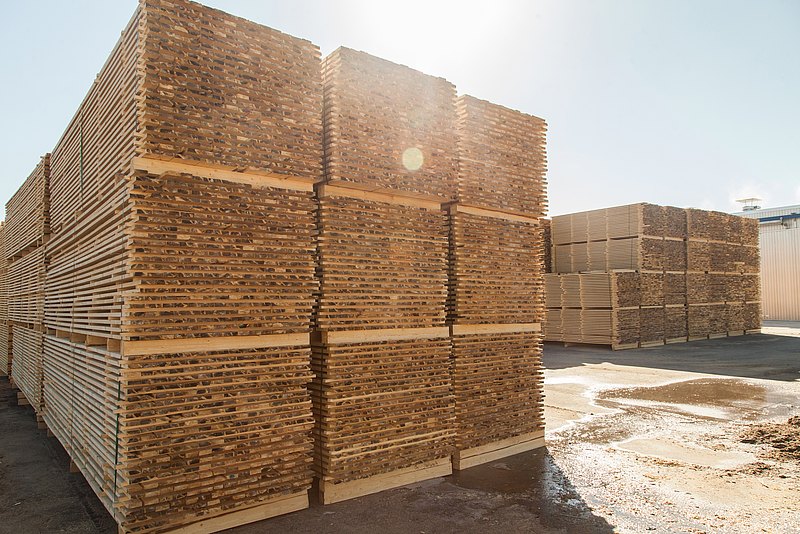Industrial Drying Techniques: Precision through Sensor Technology

Industrial drying techniques are utilised across a wide range of sectors, including construction, chemicals, food processing, pharmaceuticals, and textiles. The primary objective is the precise removal of moisture from various materials in order to ensure product quality, shelf life, and energy efficiency. However, many companies face recurring challenges such as excessive energy consumption, quality deficiencies, and inadequate process control.
Modern sensor technology is key to optimising these processes. It enables continuous monitoring of temperature, humidity, dew point, and airflow — all critical parameters for achieving uniform drying results, minimising waste, and ensuring cost-efficient production.
Overview of Industrial Drying Techniques
Convection Drying
In convection drying, moisture is removed through the circulation of heated air. Heat is transferred to the material to be dried via natural or forced airflow, causing the moisture within to evaporate.
This method is straightforward and highly versatile. It is widely used for drying wood, bricks, textiles, and food products.
- Required sensors: Temperature, humidity, and airflow sensors for regulating air distribution and drying duration.
Spray Drying
Spray drying involves atomising a liquid into a stream of hot gas. The water content evaporates almost instantaneously, resulting in a fine, dry powder. This technique is especially suitable for heat-sensitive or liquid raw materials and offers a gentle yet highly efficient drying process.
Typical applications include the production of milk powder, instant coffee, infant formula, pharmaceutical solutions, and colour pigments. Spray drying delivers a uniform particle structure, making it a preferred method in industries with stringent purity and quality standards.
- Required sensors: Temperature, humidity, and dew point sensors to monitor inlet and outlet temperatures as well as residual moisture content.

Fluidised Bed Drying
In fluidised bed drying, solid materials such as powders or granules are suspended in an upward airflow — they become "fluidised". This creates a large surface area between the product and the air, allowing for highly efficient heat transfer.
The result is a homogeneous, rapid, and precisely controllable drying process. This technology is commonly used in the pharmaceutical, chemical, and food industries, for example in drying granules, tablet precursors, or food additives.
- Required sensors: Humidity, airflow, temperature, and dew point sensors to control drying conditions.
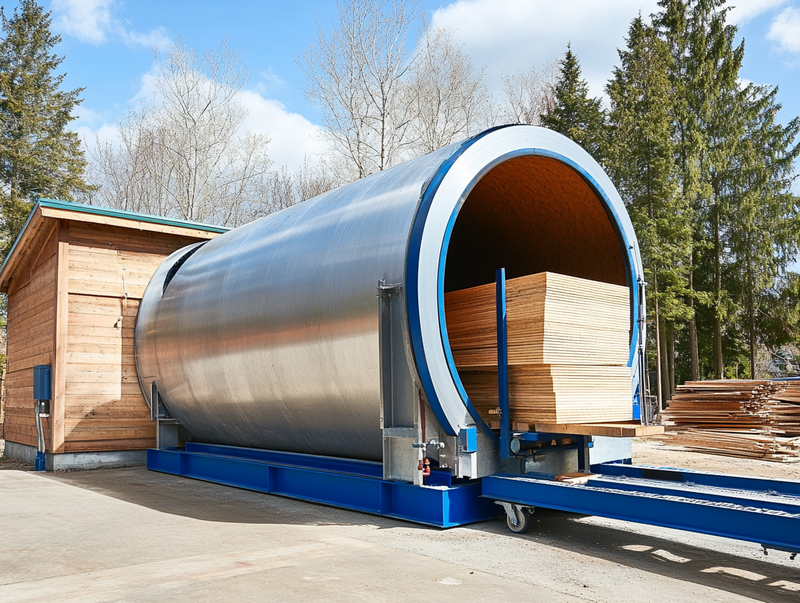
Vacuum Drying
Vacuum drying reduces the ambient pressure, thereby significantly lowering the boiling point of water. This enables gentle evaporation of moisture at relatively low temperatures.
This method is ideal for delicate products that may lose structure or efficacy when exposed to heat. Typical applications include drying active pharmaceutical ingredients, sensitive chemicals, or premium food products.
- Required sensors: Pressure, temperature, and humidity sensors for monitoring vacuum levels and residual moisture.
Microwave Drying
In microwave drying, the product is directly heated by high-frequency electromagnetic waves. This energy specifically targets water molecules within the material, causing rapid evaporation.
Heating occurs from the inside out, enabling particularly fast and uniform drying. Microwave drying is well suited for applications where speed and product integrity are critical — such as in food processing, the wood industry, or specialised chemical processes.
- Required sensors: Humidity and temperature measurement to prevent overheating and uneven drying.
Freeze Drying
Freeze drying first involves freezing the product, after which the water content is removed under vacuum by direct sublimation — the transition from solid to vapour without becoming liquid. This technique is particularly gentle and preserves the structure and constituents of sensitive materials.
It is primarily used in the food industry for producing instant coffee, herbs, or freeze-dried fruits, and in the pharmaceutical industry for preserving temperature-sensitive medicines and vaccines.
- Required sensors: Humidity and pressure sensors for precise control of the drying process.
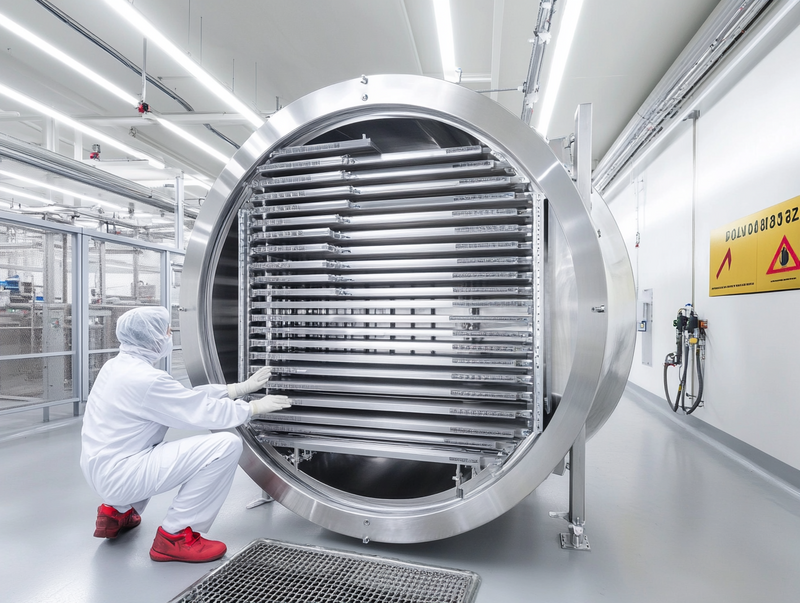
The Importance of Precise Sensor Technology in Industrial Drying Processes
Accurate sensor technology plays a crucial role in optimising industrial drying processes. By precisely measuring parameters such as temperature, humidity, or airflow, energy input can be specifically controlled and significantly reduced — a key contribution to improving energy efficiency.
At the same time, continuous monitoring ensures uniform drying, preventing material damage such as cracking or warping and safeguarding product quality. Furthermore, precise sensor technology enhances process stability. Deviations from target conditions are detected at an early stage, allowing corrective action to be taken in good time and reducing the rate of defective products.
Sensor Requirements in Drying Systems
Sensors used in industrial drying systems must withstand extreme environmental conditions. High temperatures, constant exposure to humidity, dust, and chemically aggressive media place significant demands on sensor materials and construction.
Equally important is the long-term stability of the measured values. Only reliably operating sensors allow for precise control without the need for frequent calibration or maintenance.
To ensure an efficient drying process, seamless integration of the sensor technology into existing control systems is also essential. This enables continuous monitoring of drying parameters, process optimisation, and a significant reduction in downtime.
Modern Sensor Technology as a Key Driver of Efficient and Sustainable Industrial Drying Processes
Modern sensor technology is a vital driver of efficient and sustainable industrial drying processes. It enables precise control of critical parameters, reduces energy consumption, and ensures consistently high product quality. Thanks to their robust design and easy integration into existing systems, sensor solutions play a crucial role in process optimisation.
But which type of sensor technology is best suited for each drying method to achieve optimal results?
Here is a brief overview:
| Drying Technique | Key Characteristics | Required Sensors |
|---|---|---|
| Convection Drying | Simple to implement and highly versatile. Commonly used for drying wood, bricks, food products, textiles. | Temperature, humidity, and air velocity sensors |
| Spray Drying | A gentle and efficient drying method, ideal for heat-sensitive or liquid starting materials. Widely used in food and pharmaceuticals. | Temperature, humidity, and dew point sensors |
| Fluidised Bed Drying | Enables homogeneous, controlled, and rapid drying. Applied in the pharmaceutical, chemical, and food industries. | Humidity, airflow, temperature, and dew point sensors |
| Vacuum Drying | Allows gentle evaporation of moisture at relatively low temperatures. Used for drying APIs, sensitive chemicals, and premium foods. | Pressure, temperature, and humidity sensors |
| Freeze Drying | A gentle drying technique that preserves the structure and active ingredients of sensitive products. Used in food and pharma. | Humidity and pressure sensors |
| Microwave Drying | Enables fast and uniform drying by heating from the inside out. Applied in food processing and the wood industry. | Humidity and temperature sensors |
Looking ahead, exciting developments are on the horizon: artificial intelligence and predictive maintenance are opening up new possibilities for making drying processes even more proactive and efficient. Sensor technology is thus becoming a central element of intelligent and resource-efficient production.
Talk to our E+E sensor specialists
Find out how E+E Elektronik sensors can optimise energy use and maintain quality standards. Connect with our team to explore custom solutions to make your production more efficient.



